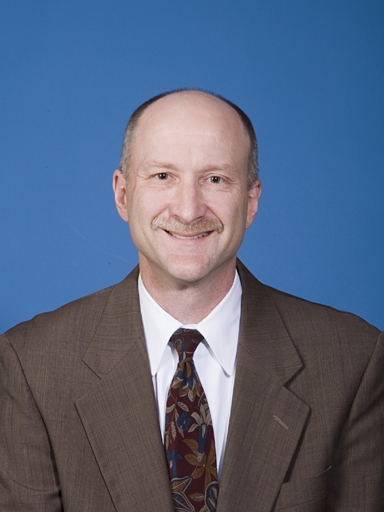Press Release
Gary Sullins, APL Aerospace Engineer, Receives Missile Defense Agency Technology Achievement Award
Gary Sullins, an aerospace engineer and supervisor within the Air and Missile Defense Department at The Johns Hopkins University Applied Physics Laboratory (APL), in Laurel, Md., was presented with a Missile Defense Agency Technology Achievement Award March 24 during the eighth annual U.S. Missile Defense Conference in Washington, D.C.
Sullins was honored for his critical role in Burnt Frost, the 2008 operation to shoot down a wayward and potentially dangerous non-functioning U.S. spy satellite. Burnt Frost demonstrated the ability of the U.S. military and its contractors to quickly adapt the Ballistic Missile Defense System (BMDS) to respond to an unconventional threat.
Relying on his 20 years of experience in air and missile defense, Sullins led an analysis team from APL, Raytheon and Lockheed Martin that determined how to modify the weapon system, predict how the system would perform and define how this one-time mission could be executed. Modifications were made to the Aegis Weapon System and the Standard Missile-3 (SM-3) — elements of the sea-based BMDS component known as the Aegis BMD system — and the resulting direct hit destroyed the satellite, preventing it (and the large amount of toxic hydrazine fuel it carried) from reaching Earth.
The award recognized that in a matter of weeks during January-February 2008, the team integrated a set of diverse defense assets into an effective weapon system that intercepted and destroyed the satellite, potentially saving countless lives. It also noted how the mission’s success speaks to the team’s flexibility, ingenuity and “drive to achieve the impossible.”
“With the expertise and leadership of talented engineers like Gary Sullins, the multi-organizational team proved we could take a system that wasn’t designed for this mission, and quickly and successfully define solutions to incredibly difficult engineering challenges that helped avert a potentially fatal disaster,” says Conrad Grant, head of APL’s Air and Missile Defense Department.
In 2008, Sullins was part of a small team at APL awarded the Aegis BMD Excellence Award for significant contributions to Operation Burnt Frost.
MDA created the Technology Achievement Award (formerly the Technology Pioneer Award) to recognize significant contributions in missile-defense science and technology, engineering or program management. Several current and former APL staff members have been presented this award including Alvin Eaton, a 2008 awardee recognized for 60 years of missile defense contributions (http://www.jhuapl.edu/newscenter/pressreleases/2008/080417.asp); and Max Peterson, a 2007 award recipient and the Lab’s original project manager for the Midcourse Space Experiment satellite, the first space-based platform to track missiles in their midcourse flight and collect vital data for designing space- and ground-based missile defense systems.
An APL team was also recognized in 2006 for its contributions to the Delta 180 program, part of President Ronald Reagan's mid-1980s Strategic Defense Initiative to defend the U.S. against ballistic missiles (http://www.jhuapl.edu/newscenter/pressreleases/2006/060405.asp).
Sullins, who holds doctorate, master’s and bachelor’s degrees in aerospace engineering from the University of Maryland, is a resident of Ellicott City, Md. He’s a member of the American Institute of Aeronautics and Astronautics.
